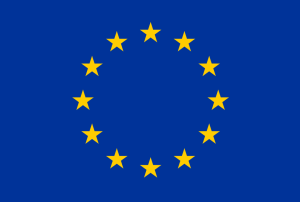Intelligent New Radio Access Network:
Deployment and Management (IRAM)
Funded by the European Union. Views and opinions expressed are however those of the author(s) only and do not necessarily reflect those of the European Union or the Research Executive Agency. Neither the European Union nor the granting authority can be held responsible for them.
This project has received funding from the European Union’s Horizon 2020 research and innovation program under the Marie Sklodowska-Curie grant agreement No 101108094.
Summary
The IRAM project investigates architectural innovations in 6G Radio Access Networks, with a focus on the planning of flexible and densely deployed NG-RANs integrating IAB (Integrated Access and Backhaul) nodes. It addresses two core challenges: unsupervised radio node configuration and reliable mmWave backhauling. A key objective is the design of adaptive NG-RAN infrastructures capable of responding dynamically to variations in traffic demand, node failures, and network conditions.
The project is conducted at Sabanci University in collaboration with local research institute, targets the automated, low-cost deployment and operation of NG-RANs, especially:
- Unsupervised planning and optimization: Developing scalable, automated techniques to determine optimal node configurations, and network recovery strategies without manual intervention.
- mmWave fronthauling/backhauling (RP2): Designing reliable, mmWave link resilient to blockage and node failure, considering mobility.
The research incorporates experimental results and advanced theoretical frameworks (e.g., random network and information theory) to ensure realistic and impactful outcomes aligned with 3GPP and EU 6G visions.
Outcomes
- The development of novel mmWave techniques for mobile devices to cope with the short channel coherence time and phase noise (validation through experiment)
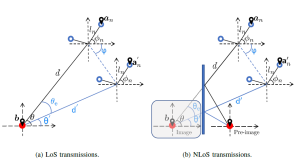
Overcome the phase noise and short channel coherence time
 Experimental validation
Experimental validation
- The design of a new architecture that relies on redundant links to overcome link interruption for mmWave mobile devices
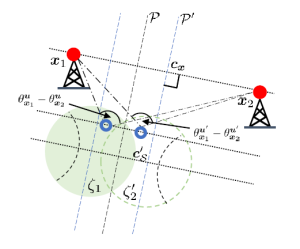
- The management of distributed NG-RANs
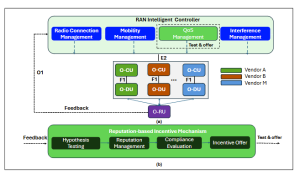
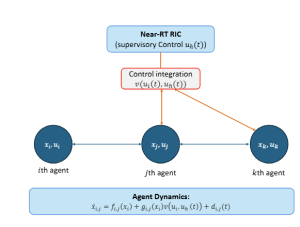
Publications:
[1] A. A. Oznam, C. Farhati, M. Chraiti, A. Ghrayeb, H. Celebi, F. Abdelkefi, and K. K. Tokgoz, “Bandwidth Expansion in N-fold Frequency Multiplier: Is it N or √N?,” in IEEE Communications Letters, 2025. [Link]
[2] M. Chraiti and O. Ercetin, “On the Space/Time Correlation of mmWave AoAs: Concept and Experimental Validation,” in Proc. IEEE WCNC, 2024. [Link]
[3] O. Ercetin, M. Chraiti and R. E. Karakay, “Consolidate Viability and Information Theories for Task-Oriented Communications: The Case of Remote Power Plants,” in Proc. IEEE EUCNC 6G Summit, 2024. [Link]
[4] M. Chraiti and O. Ercetin, “On the Efficacy of Fingerprint-Based mmWave Beamforming in NLOS Environments: Experimental Validation,” in Proc. IEEE EUCNC 6G Summit, 2024. [Link]
[5] B. Bozkurt, A. M. Aktas¸ H. A. Ginel, M. Chraiti, A. Gorcin, and I. Hokelek, “Beam Codebook Refinement for mmWave Devices with Random Orientations: Concept and Experimental Validation” in Proc. IEEE WCNC, 2025. [Link]
[6] K. Ibrahim, M. Chraiti, and A. Ghrayeb, “A Moral Hazard Detection Framework: Reinforcing Trust in ORAN” in Proc. IEEE WCNC, 2025. [Link]
[7] A. A. Oznam, M. Chraiti, A. Ghrayeb, and K. K. Tokgoz, “Blind Matched Filter Design for Communication Chains Involving Frequency Multipliers: LSTM-Based Approach,” Accepted in Proc. IEEE PIMRC. [Link]
[8] D. Saricelik, M. Chraiti, A. Levi and O. Ercetin, “Zero-Knowledge-Proof for Moral Hazard Detection in O-RAN Without Benchmarks: Let Us Play WereWolf Game!,” Accepted in Proc. IEEE PIMRC, 2025. [Link]
Presentation Samples:
P1. Consolidate Viability and Information Theories for Task-Oriented Communications: The Case of Remote Power Plants (EUCNC1-2024)
P2. On the Efficacy of Fingerprint-Based mmWave Beamforming in NLOS Environments: Experimental Validation (EUCN2-2024)
P3. On the Space/Time Correlation of mmWave AoAs: Concept and Experimental Validation (WCNC-2024)
P4. On Advancing mmWave Communications for Mobile Devices (IMDEA-Spain-2024)
